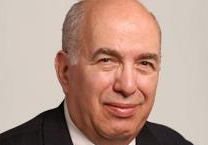Social Media and the Future of Finance

Editor’s Note: This is part of a series highlighting the role technology may play in bringing about the Future of Finance.
In markets, the way we communicate has changed significantly over the past 15 years as a result of the internet. New tools are evolving that affect information dissemination, media, education, and idea sharing. Meanwhile, traditional trading floors have receded as electronic trading becomes more and more dominant.
It is very exciting to think about where we might be headed and to contextualize social media platforms and how they relate to finance.
Evolving Tools of the Social Media Age
On a mechanical level, social media are creating and refining internet-based communication tools, which allow users to interact and share information and ideas globally with considerably less friction and lower latency than ever before. As such, it seems natural that market participants, financial journalists, and analysts would gravitate to these tools.
It has been only 14 years since the launch of Blogger, the first scaled blogging platform. Four years later (2003), Blogger was bought by Google, and in the same year, WordPress, now the largest and most robust electronic publishing platform, launched. These blogging platforms allow any individual who is knowledgeable in a specific area to write on a consistent basis, publish content for close to nothing, and grow an audience.
In 2006, Twitter launched its microblogging platform, which allows users to share short tweets and links while simultaneously following the tweets of other users and to interact with them directly and publicly. In 2009, StockTwits launched, providing a similarly organized platform but with features tailored to those interested in specific markets by using “cashtags” (e.g., $AMZN), which allow members to organize and stream messages around specific tickers. These newer social platforms have resulted in an explosion of real-time, crowd-sourced information and idea sharing around markets.
The emergence of blogging and microblogging platforms has fostered increased specialization (or verticalization) as experts in even the narrowest areas are able to inform and relate to others who are interested in similar subjects.
These new media platforms have also forced a hierarchical shift in traditional financial news media.
The Hierarchical Shift in Financial News Media
Social publishing tools are profoundly changing financial news media in terms of how and where information and analysis are created and communicated.
The speed of information dissemination is accelerating. Microblogging platforms, such as StockTwits and Twitter, enable crowd-sourced, real-time sharing and amplification. Information spreads much faster than ever before and has spurred the shortening of news cycles.
Such acceleration has contributed to the disruption of traditional news media entities. The rise of the individual participant communicator has furthered the disruption.
If we back up the lens, we can think about it this way: The hierarchical structure of financial news media is shifting. Traditionally, news media organizations channeled communication primarily in one direction. They were also the primary publication source, which elevated their influence above those consuming the information.
With the emergence of social publishing tools, this hierarchy has broken down and the elevated status of traditional media has been diminished. Now, there is more of a level playing field. Today, individual publishers equipped with a blog and microblogging accounts are breaking stories and providing analysis across multiple subjects, including fundamental and technical analysis, earnings releases, product launches, global macro events, and more.
Individual publishers, as independent sources, are inherently more responsive to their audience given the structure of the media platforms they are utilizing. It is now a bidirectional interchange. In turn, individuals are now able to build their own personal brands based on the quality of the content they provide.
Social Finance Accelerates Learning
Social tools have the potential to spread knowledge and shorten the learning curve as information becomes relational, well organized, and highly accessible.
Take one simple example, the StockTwits $STUDY stream. This is a microblog stream through which all messages are tagged “$STUDY” flow. Members know to tag messages that are educational, and thus anyone who wants to learn more about markets has an easy-to-incorporate resource for scanning such content.
The beautiful thing about the stream is that the majority of those sharing their knowledge provide accessible links, so those who are interested in a topic can ask the content provider questions directly on the stream.
The Future of Social Finance
The great challenge presently relates to filtering and curation. How can consumers get only the information they want to see when they want to see it? Real-time social searching remains a difficult proposition, especially for the microblogging platforms previously discussed. Over the coming year, we will likely see considerable improvements in real-time searches and filtering.
Social media platforms are increasingly fostering real-world relationships as users share ideas with each other over time, whether they are trading stocks, building investment theses, vetting each others’ ideas, mentoring, or even forming business partnerships. As these social platforms mature, these shifts will signal a more implicit understanding that these are viable communication and relational tools and much more than something merely virtual.
If you liked this post, don’t forget to subscribe to Inside Investing via Email or RSS.
Please note that the content of this site should not be construed as investment advice, nor do the opinions expressed necessarily reflect the views of CFA Institute.
Photo credit: iStockphoto/Creative_improv



Phil great piece.
I jut want to say that ST does GREATLY speed up the learning curve. Thanks to Stocktwits, I learned about Jesse Livermore thanks to a trader talking about it. This led to me reading the book 10 times in the first 6 months. Once I had the info in place, I started putting what I read into action. I also observed videos and links provided by traders who traded the same type system.
I then played on my strengths, ,,, such as being observant. That led to absorbing everything I read on ST related to breakouts, as an example., watching hours and hours and hours of the markets everyday and understanding that there are times to trade and times not too.
After 2 and half years, I have a solid system, that is perfect me for me. IT doesnt mean I always bank coin but it is consistent, keeps me out of bad trades and I keep learning.
great piece, social media in financial media has turned things around greatly. Anyone who has the ability to read and comprehend, good emotional balance and the patience to fail, pick themselves up and learn from others mistakes can make coin in the markets,,,, something that Wall Street has and doesnt want to do for the general public.
Thanks for saying so John. Y, I thought the learning curve section was something I had to get it in there because it amazes me more than anything else about this whole socialization process occurring.
Good work, keep it up.